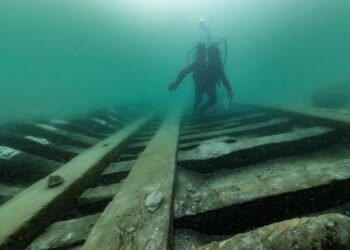According to a new study, monkeys made 50000-year-old stone tools found in Pedra Furada, located in the state of Piauí in north-eastern Brazil.

CONICET researchers Agustn Agnolín and Federico Agnolín demonstrated that 50,000-year-old tools discovered long ago in the “Pedra Furada” cave in Brazil were created by ancestors of capuchin monkeys, not humans, as some specialists believe.
Pedra Furada is a group of over 800 archaeological sites where hundreds of rock drawings going back 12,000 years have been discovered
The scientists found that tools from this Pleistocene site are compatible with capuchin-made lithic deposits, which are formed by repetitive impacts between a boulder and a flat quartzite surface.
The researchers said that they’re “confident that the early archeological sites from Brazil may not be human-derived but may belong to capuchin monkeys.”
Capuchin monkeys are New World monkeys of the subfamily Cebinae that live in tropical forests of Central and South America, as far as Argentina.
“Our study shows that the tools from Pedra Furada and other nearby sites in Brazil were nothing more than the product of capuchin monkeys breaking nuts and rocks some 50,000 years before the present,” explained F. Agnolín.
The results were published in The Holocene.
More information: Agnolín, A. M., & Agnolín, F. L. (2022). Holocene capuchin-monkey stone tool deposits shed doubts on the human origin of archeological sites from the Pleistocene of Brazil. The Holocene, 09596836221131707.























